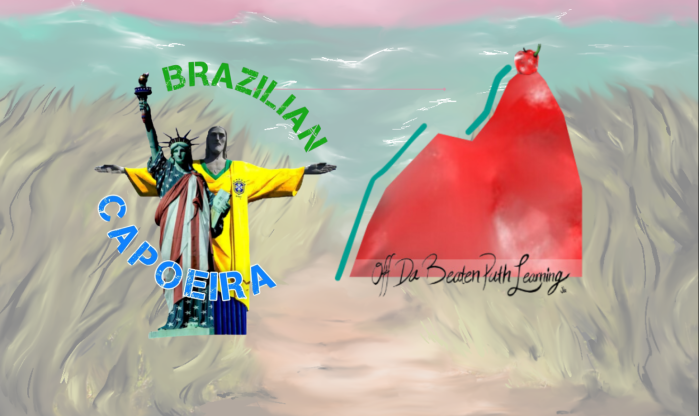WASHINGTON, Mar.30, 2011 (IPS/GIN) – On the heels of U.S. President Barack Obama’s trip to Latin America, Washington’s traditional role as “regional hegemon” is being reevaluated as its attention focuses on the Arab Spring and an emerging commercial competitor – China – focuses on the U.S.’s backyard.
“Washington continues to ignore, misapprehend, or minimise the threat that’s happening right under our noses,” argued former assistant secretary of state for Western Hemisphere Affairs Robert Noriega, now a visiting fellow at the neoconservative American Enterprise Institute, at a panel discussion held by AEI earlier this year.
“That passivity has been read by the Chinese as an indifference to what they were up to in the Western hemisphere and the results…are to the detriment of U.S. interests and security,” he said.
Others see Beijing’s growing role in Central and South America as merely symptomatic of the region’s overall diversification of economic ties.
“While the China-Latin America relationship has clearly grown enormously – it’s become very important for the region – it’s…part of this broader panorama of globalisation of Latin America as a whole,” commented Dan Erikson, a senior adviser for Western Hemisphere Affairs in the U.S. State Department, at the discussion.
Sino-Latin Trade Boom
In the last decade, economic relations between resource- hungry China and the nations of Central and South American have exploded – from 10 billion dollars worth of bilateral trade in 2000 to nearly 120 billion in 2009 – eating away at the United States’ commercial dominance in the region.
China is expected to supplant the European Union as Latin America’s second largest trading partner in the coming years and has already displaced the U.S. as the top trading partner to Brazil and Chile, with Peru anticipated to be next.
Beyond commerce, Beijing has also emerged as one of the region’s – and the world’s – biggest bankers, dispensing more money than the World Bank in the past two years to other developing countries, including 11-figure loans to Venezuela, Brazil and Argentina.
Most worrisome to China-hawks in Washington, however, is the Asian giant’s ramping up of military ties in Latin America – from interchanges among students, officers, and defence ministers to equipment and arms sales, including to the government of Venezuela’s strongly anti-U.S. Hugo Chavez.
These connections, they claim, not only threaten U.S. regional influence and interests, but also its national security. Others, meanwhile, are sceptical of the idea that China’s current military aims in Latin America put its northern neighbour in direct peril.
“The way I see that is getting to know each other,” argued Eric Farnsworth, vice president of the U.S.-based Council of the Americas, referring to Sino-Latin military relations. “One has to watch it, I suppose, but we don’t have to go crazy” in our speculations, he added.
In Farnsworth’s view, Chinese pronouncements and actions in the region have suggested a relationship built on commerce, not political or strategic engagement.
“I think it’s in the Chinese interests to have a stable region where the rules of the game are known, where they are one of many actors [in the market],” he told a small group of reporters at the National Foreign Trade Council here on Monday.
“At one level, the U.S. security presence in the region is making things much more secure for other investors,” he said. “Why would China want to disrupt that?”
At the same time, he admitted, Chinese soft power in the region is undeniably growing, with an increase in high-level bilateral visits and with Beijing investing not only in raw materials and infrastructure development but also in educational and cultural exchanges.
Tellingly, while Brazil was the first of three stops in Obama’s whirlwind five-day regional tour, the first international destination of Dilma Rousseff’s presidency will be China, where she will pay a visit next month.
Still, Farnsworth argued, Beijing’s underlying motives in the Sino-Latin relationship are economic.
“The reason why China is doing this is not for development purposes…It’s not to gain influence…It’s not to replace the United States militarily and politically…It is to goose the Chinese economy,” he pronounced.
Tensing ties
For China, Latin America, with its abundance of natural resources and growing markets for Chinese goods, is an attractive region with which to do business.
But trade asymmetries between the two – Latin America largely exports raw materials like copper and iron to Asia, while China inundates their markets with more value-added products like cell phones and cars – have caused ties to tense.
“Countries are beginning to re-examine whether this relationship is really equal and really beneficial,” Farnsworth said.
Earlier this year, the Sao Paulo Industrial Federation (known by its Portuguese acronym as FIESP) issued a statement criticising Beijing’s commercial ties to Brazil. “The relationship with China is important but from an industrial perspective, it is extremely negative,” it said.
With growth in the appreciation of the real and China’s continued undervaluation of its renminbi, Brazilian manufacturers complain that their goods can no longer compete with the flood of cheaper products from the East, exacerbating the trade imbalance between the two countries.
Brasilia thus broke from its rhetoric of South-South cooperation earlier this year, when finance minister Guido Mantega called for its East Asian partner in the so-called BRIC (Brazil, Russia, India, and China) alliance to revalue its currency.
“Now the United States isn’t the only country…complaining about currency,” Farnsworth noted. “Now, it’s another BRIC country. Now, it’s another emerging market.”
Although trade with China has been critical to the growth of Latin American economies over recent years and their ability to stay afloat through the global financial crisis, analysts from across the ideological spectrum – including both Noriega and Farnsworth – argue that China’s mercantilist commercial strategy also stunts economic gains in some of the region’s countries.
“Frankly, [growth rates] should be two to three percentage points higher than they are,” Farnsworth said.
With this recent rock in trade relations between China and Latin America, Washington is now being pushed to build on the momentum from Obama’s south of the border trip to strengthen its regional ties, starting with the passage of the still-pending Colombia and Panama free trade agreements.
“We need to start thinking strategically about the Western hemisphere,” Farnsworth argued, advocating for a broader trade agenda for the region. “I don’t think we can put the Chinese genie back in the bottle.”






















